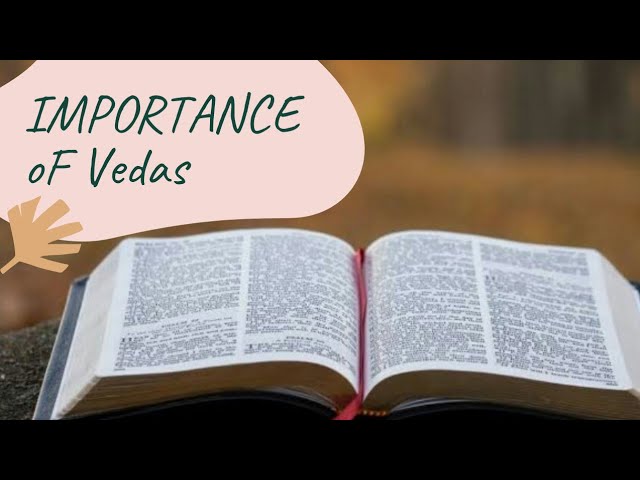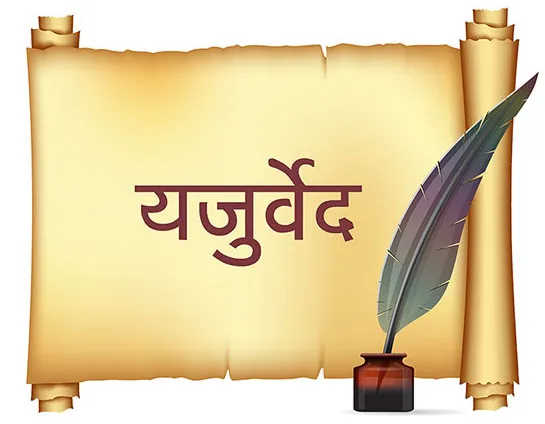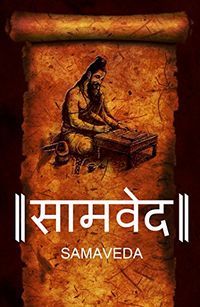The Vedas are the oldest written document in the world. Vedas are considered to be the main texts of Sanatan Dharma. It is said that all other religions originated from Vedas. God propagated the knowledge of Vedas in different languages in his own way. The word Veda is derived from the Sanskrit word which means to contain all the knowledge in a single word.
How did The Vedas Originate?
Vedas are based on the knowledge narrated by God to the sages. That is why it is called Shruti. Vedas are the inexhaustible storehouse of Ancient knowledge and science. It has solutions to every problem of humans. The Vedas are full of knowledge related to Brahma i.e. God, Universe, Astrology, Mathematics, Chemicals, Medicine, Nature, Geography, Religious rules, History, customs, etc. Agni, Vayu, and Surya performed penance and attained the Vedas, according to the verse of Sat Pata Brahmana.

There are four types of Vedas.
- RIGVEDA
- YAJURVEDA
- SAMVEDA
- ATHARVAVEDA
The first three Vedas are associated with Agni, Vayu, and Aditya, and possibly the Atharva Veda is believed to have originated from Angira. It is said that the four Vedas originated from the mouth of Brahma ji.
Importance of Vedas
Veda is the oldest Text. Therefore it is natural to name a person or a place in the Vedas. For example, even today a person or a place is named after the names of Ramayana and Mahabharata. If we talk about the history of Vedas, then Vedas are the oldest written documents of human civilization. 28000 manuscripts of the Vedas are kept at the Bhandarkar Oriental Research Institute in Pune, India.
In this, 30 manuscripts of Rigveda are very important. Which have been included in the list of heritage by UNESCO. UNESCO has also included 30 manuscripts of Rigveda from 1800 to 1500 BC in the list of cultural heritage. It is noteworthy that in UNESCO’s list of 158, India’s 30 important manuscripts come at number 38.

Upvedas of Vedas
There are 4 Upveda of Vedas
- Ayurveda of Rigveda,
- Dhanurveda of Yajurveda,
- Gandharvaveda of Samaveda,
- Astaptaveda of Atharvaveda.
What Do The Vedas Represent
The Rigveda shows the situation.
The Yajurveda refers to transformation.
The Samaveda denotes mobility and
The Atharvaveda denotes inertia
Meaning And Definition Of Each Veda
RIGVEDA
Rig means knowledge and status. This is the first Veda that is methodical. It has 10 mandalas i.e. 10 chapters, in which there are 1028 hymns, in which there are 11000 mantras. There are 5 branches in this Veda. Sakalpa, Vaskalpa, Asvalayana, Sankhayan Mundakayan.
It has a lot to do with the Geographical location and the mantras invoked by the deities. The hymns of Rigveda describe the positions of the deities, their prayers, and their positions in Devlok.
In this, information about water therapy, air therapy, solar therapy, mental therapy, and healing by Havan is also available. The mention of medicines is found in the tenth mandala of Rigveda, in which the number of medicines is said to be about 125. Those medicines are found in 107 places. Soma has a special description of medicine.

YAJURVEDA
It means yat plus Ju– Yat means dynamic. Ju means sky.
Apart from this, there is also mention of the inspiration of action and the best work, the methods of sacrifice in Yajurveda, and the mantras used in the sacrifices. Apart from Yagya, there is a description of philosophy. This Veda is prose. This Veda contains prose mantras for the process of Yagya. There are two branches of this Veda, Shukla Paksha, and Krishna Paksha.

SAMVEDA
It means transformation and music, gentleness, and worship. In this Veda, there is a musical form of the hymns of Rigveda. Samaveda is in lyrical form. This Veda is considered to be the origin of music. In this Veda of 1824 mantras, except 75 mantras, all other mantras have been taken from Rigveda itself. It mentions the deities like Savita, Agni, Indra, etc. It mainly has three branches and it has 75 hymns.

ATHARVAVEDA
Tharva means Vibration and Atharva means Non-vibration. Those who are absorbed in the worship of the Supreme God while performing deeds superior to knowledge, attain salvation by attaining a trembling intellect. In this Veda, there is mention of mystical disciplines, herbs, miracles and Ayurveda, etc. It has 5687 mantras in 20 chapters. This Veda has 8 sections.

Conclusion
Dharma Shastra has been composed from Rigveda, Moksha Shastra from Yajurveda, Kama Shastra from Samaveda, and Arthashastra from Atharvaveda.
